
When public outcry erupted in the wake of the Parkland, Florida, school shooting, and students led walkouts pushing for gun reform, Randi Weingarten, president of the American Federation of Teachers, told us, “This is what democracy looks like.” When Kristen Keska, an East Hampton, Connecticut, teacher, joined the Connecticut Women’s March, she echoed that sentiment. “As a teacher of government,” she said, “my favorite chant at these marches is, ‘Show us what democracy looks like? This is what democracy looks like!’” Agree or disagree with their causes, Weingarten and Keska are right. Using our First Amendment rights to peaceably assemble and express speech is exactly what democracy looks like.
Marching in the streets, however, is not the only manifestation of democracy in action. When we elect school board members who share our values, that is also democracy in action. And it could be argued that when elected or appointed government officials, such as Florida Governor Ron DeSantis and Arkansas Education Secretary Jacob Oliva, follow through on campaign promises to fight against “woke” policies and practices in public schools, that too is what democracy looks like.
Of course, it’s unlikely you would ever hear that from some left-leaning members of the education establishment. Such efforts by elected officials to regulate curricular content in schools, we are told, are anti-democratic. How, then, should the public engage with and provide oversight to a public education system that is run by unelected public servants? The tremendous growth in school choice programs suggests many believe parents should be the primary decisionmakers when it comes to their child’s education. Others argue that educators, teachers, and school leaders are experts and should have more authority. At the same time, local school boards and state policymakers have the constituted authority to operate public schools and regulate private ones, and citizens often elect individuals to these offices to advance a specific agenda.
Interestingly, some on the political left seem to believe that allowing a non-public organization with over a billion dollars in annual revenue to dictate the content of American history courses is a democratic process. The College Board, through its Advanced Placement courses and tests, holds outsize sway over the content taught in high school classrooms. Some perceive a leftward “critical” shift in AP courses in recent years. While accepted by many in public education, the composition of the College Board’s latest offering—AP African American Studies—drew the ire of conservatives and some policymakers, creating a new front in our ongoing education culture wars.
Culture wars are nothing new in education, both in the United States and globally. And, as Tony Taylor and Robert Guyver show in History Wars and the Classroom, history curricula often provide fodder for conflict. Stakeholders in all democracies rightly argue about how to teach history, contending over which people, groups, and movements get left in and out of the national narrative, what events matter most, how to interpret them, and even whether history holds objective truths.
Here, we examine one of the latest flashpoints in education culture wars—the battle over the pilot AP African American Studies course in Arkansas. Just before fall of the 2023–24 school year, with little explanation or notice, Arkansas policymakers removed the state support (funding and graduation credits) typically provided for Advanced Placement courses from AP African American Studies. Supported by students, teachers, and local and national constituencies, five school districts went ahead with the course.
Interviews with key players in the drama, and analyses of their writing at the time, reveal how school superintendents wrestle with competing conceptions of democratic control. They recognize the right of state elected officials to govern, even as they favor greater local (meaning their own) authority. Not surprisingly, many activists, classroom teachers, and students are apt to view state action as political meddling in education, anti-democratic, and even racist. Our analysis uncovers deep-seated tensions between state-level political control and local educational autonomy, and it points to the necessity of balancing these impulses to preserve democratic values in public education. Yet, striking the right balance proves challenging when public debate over curricula is dominated by inflammatory soundbites rather than nuanced discussion and fact-based reporting.

Education Culture Wars
As best shown in Jonathan Zimmerman’s magisterial Whose America? Culture Wars in the Public Schools, education culture wars have four key attributes. First, culture wars involve identity, with different sociopolitical groups battling over who we are. Unlike with battles over spending levels, policymakers therefore find it difficult to split the difference between competing sides. In the past, disputes over identity in America were often ameliorated politically by including new people in the conversation, like African American Crispus Attucks and German American Molly Pitcher—adding ever more group exemplars, whatever their historical importance. This tactic fails, however, in zero-sum conflicts in which one side wins, another loses. As Zimmerman details, the quintessential example happened in the early 20th century when some (mainly Southern) white historians developed the Lost Cause paradigm. Lost Cause proponents argued, among other things, that the U.S. Civil War was not primarily about slavery and that enslaved people in the South fared better than factory workers in the North. (Lost Cause backers never explained why so many African Americans tried to escape the South, not the North.)
A second feature of education culture wars is that local battles often become national in scope, particularly when they involve national interest groups or professional organizations, whether the left-leaning American Library Association or the right-leaning Moms for Liberty. Third, key combatants often have no children in school and thus are incentivized to keep fighting rather than compromise. In combination, these two attributes lead to a fourth: education culture wars offer politicians incentives either to avoid the conflicts entirely or to take sides to build a state or national brand, as Florida Governor Ron DeSantis did while running for president and as California Governor Gavin Newsom seems to be doing in preparation for future opportunities.
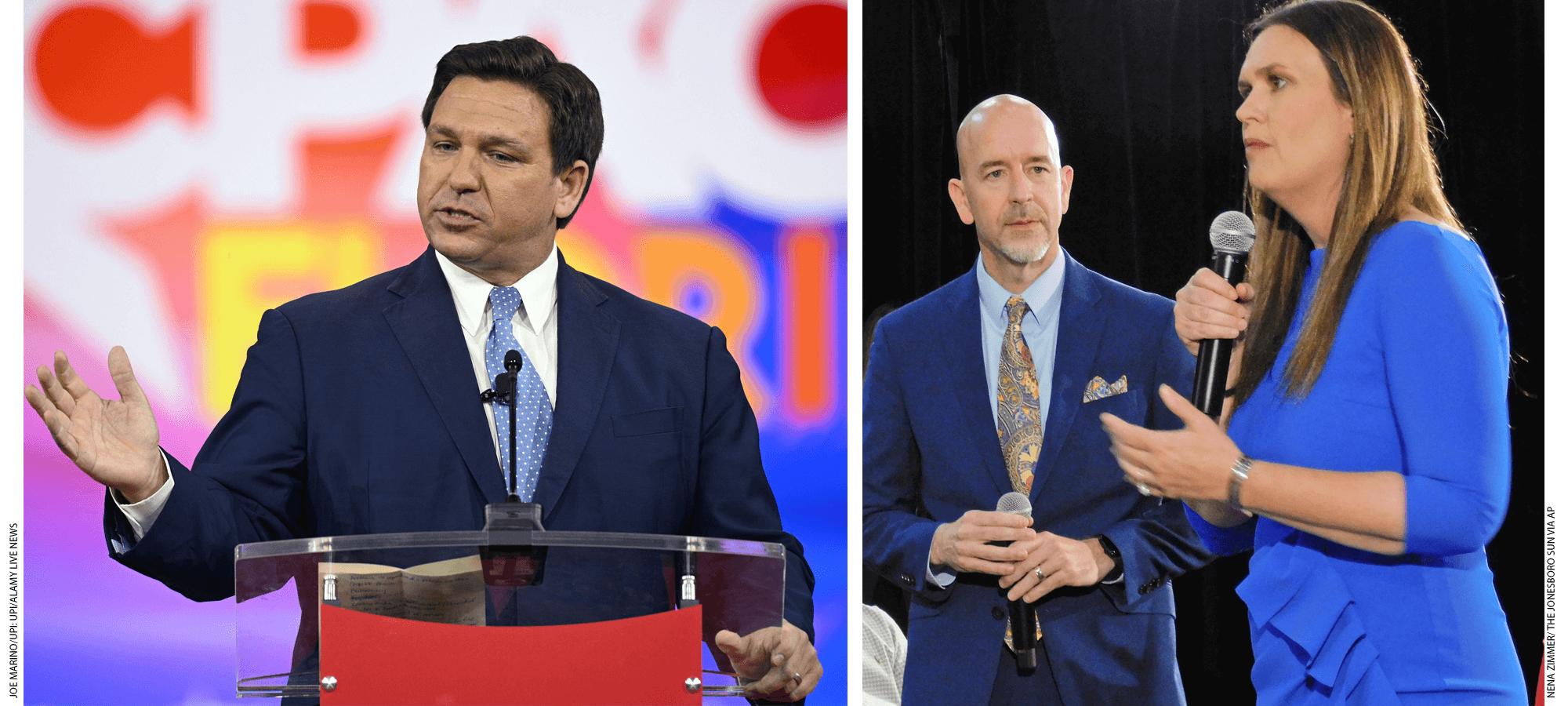
The Arkansas Front
The Arkansas battle over AP African American Studies started out of state. In January 2023, the Florida Department of Education, which has unusually broad authority over K–12 public education in the state, denied approval to the new course. The move likely reflected Governor Ron DeSantis’s presidential ambitions, as his subsequent campaign emphasized his role in reducing the power and autonomy of “woke” educational institutions. Most media coverage of the episode described DeSantis as opposing teaching about America’s history of slavery and race. In fact, as Education Next executive editor Rick Hess noted that March, Florida mandates considerable coverage of the history of racial oppression in the U.S. across multiple grades. The department’s move appeared to be based instead on language in the state’s 2022 Stop WOKE Act restricting how schools teach about issues of race and gender.
The College Board soon announced revisions to the African American Studies framework, which some Republicans welcomed. While the College Board claimed that the changes were already in process prior to DeSantis’s criticism, the timing of the changes certainly gave the appearance of being responsive to the political pressure. The revisions did not mollify Governor DeSantis, however, who continued to lob rhetorical grenades at the College Board that animated media coverage of the course. Indeed, “Florida” has been the 12th most used word in state and national news coverage of the AP African American Studies controversy; “DeSantis” is 14th.
Before he became Arkansas’s education secretary, Jacob Oliva had been a DeSantis political appointee in Florida, something Arkansas educators often mentioned when we spoke with them. Through the spring and summer of 2023, Secretary Oliva was preoccupied with fending off challenges to and writing the regulations for Governor Sarah Huckabee Sanders’s signature LEARNS (Literacy, Empowerment, Accountability, Readiness, Networking, School Safety) Act, which raised teacher pay, increased publicly funded school choice including private options, and mandated phonics instruction. Even so, Oliva took time to find out which school districts and charter schools planned to offer AP African American Studies. He requested syllabi and other supporting materials through the spring and summer while assuring educators they would have advance warning if the course proved problematic for state policymakers.
Then, on August 11, just three days before the new school year began, the Arkansas Department of Education notified schools that the state would no longer financially support the College Board–approved course nor recognize credits students earned in it for state graduation requirements. Arguably, this fit Governor Huckabee Sanders’s education agenda, which included popular items such as banning the use of state funds for teaching and training the demonization of those of any race.
All five school districts that planned to offer AP African American Studies declared their intent to proceed despite the absence of state funding and the likelihood that credits would not count for graduation. The state education department responded with a request that the districts submit lesson plans from the course for review within two weeks. Meanwhile, activists and surviving members of the Little Rock Nine, who bravely integrated Little Rock Central High School in 1957, made public statements opposing the department’s moves. Their views received considerable publicity and reflected (and perhaps shaped) those of many educators and students.
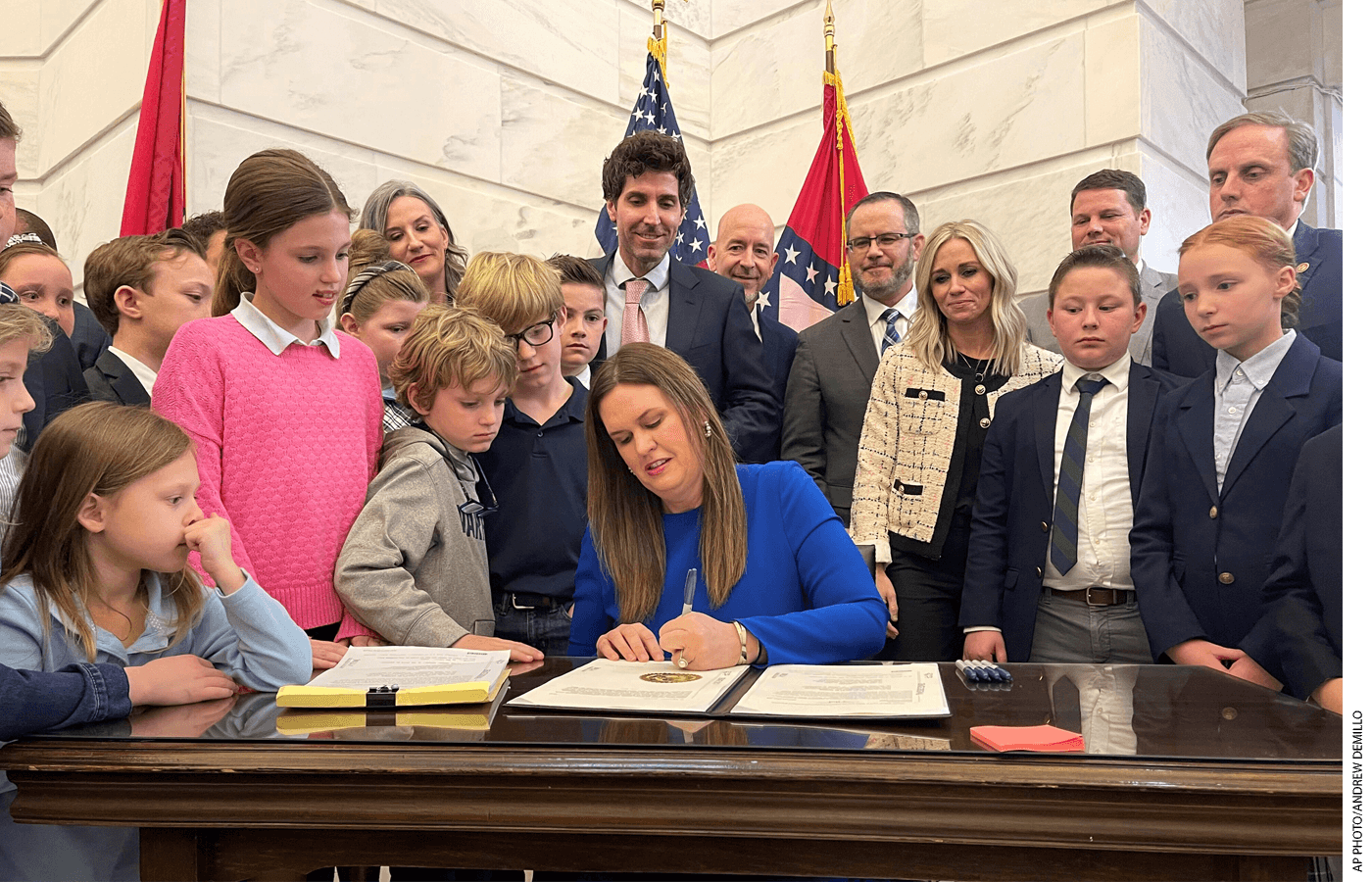
How Local Educators Viewed the Conflict
Superintendents, teachers, and students we interviewed in fall 2023 across the five affected school districts, all of whom we granted anonymity to ensure they could speak freely, could generally be described as defiant. Their comments revealed deep skepticism of political influence over educators, belief in the role of education in preserving democratic values, perceptions of strong support in their local community, and concerns about racism. Ultimately, they reveal a fundamental tension in beliefs about who controls education content in a democratic society.
Some state-level stakeholders also expressed concerns about politicians getting involved in curricular decisions best left to the experts (a decidedly undemocratic notion). One of them complained:
I’ve watched the Arkansas State Board of Education closely for 25 years. Whether it’s a Democratic or Republican administration, I have never seen anyone on the State Board of Education who knows a blessed thing about education. . . . What if we elect a governor who says, “You know, geometry is not real; we shouldn’t have geometry? So, if you want to offer geometry, you can do that locally. But we won’t require that at the state level anymore”?
The superintendents were more restrained and pragmatic, acknowledging that public schools are governed by publicly elected leaders with legitimate governance roles. Yet, as one remarked, “It’s kind of a narrow path that you walk because good [state-level] guidance is helpful. It’s when it becomes overreaching that it potentially isn’t beneficial.” Another superintendent felt “this incident highlighted the dynamics between state regulation and localized educational decision-making. Some people have blurred lines with control that shouldn’t be blurred.”
EdNext in your inbox
Sign up for the EdNext Weekly newsletter, and stay up to date with the Daily Digest, delivered straight to your inbox.
All three superintendents we interviewed expressed concern that courses like AP African American Studies are vital in fully informing future citizens, and, as one put it, “an educated populace is the only reason that we survive.” All also felt that the decision to offer AP African American Studies had more support than opposition in their school district. One recalled, “I started getting phone calls, text messages, just random calls, from community members saying how proud they were that their superintendent, that their school district was moving forward.”
In short, superintendents feared that too much state-level political control could in the long run undermine local control and the public’s preparation for democracy. As one put it, “We must remember the roots of public education, established to ensure an informed citizenry capable of participating in the democratic process.” Administrators also noted that some students and teachers wanted AP African American Studies, so precluding that option seemed unfair. One superintendent did ponder the risks of defying the state’s department of education by offering the course: “When you make decisions like that, you worry about how that decision would impact our school district.”
Local activism and fear of bad publicity may have kept the state government from taking additional steps. One state-level stakeholder said, “I’m excited that the local community stood up. I’m excited that they said we wouldn’t deal with this silliness. We’re going to offer the course.” In part, this success reflected student efforts. One student stated, “I think student voice played a large part in it. [Little Rock students] posted a bunch on social media and started petitions. And once you see that the youth of your state are fighting against what the policies are, you can’t help but take notice.”
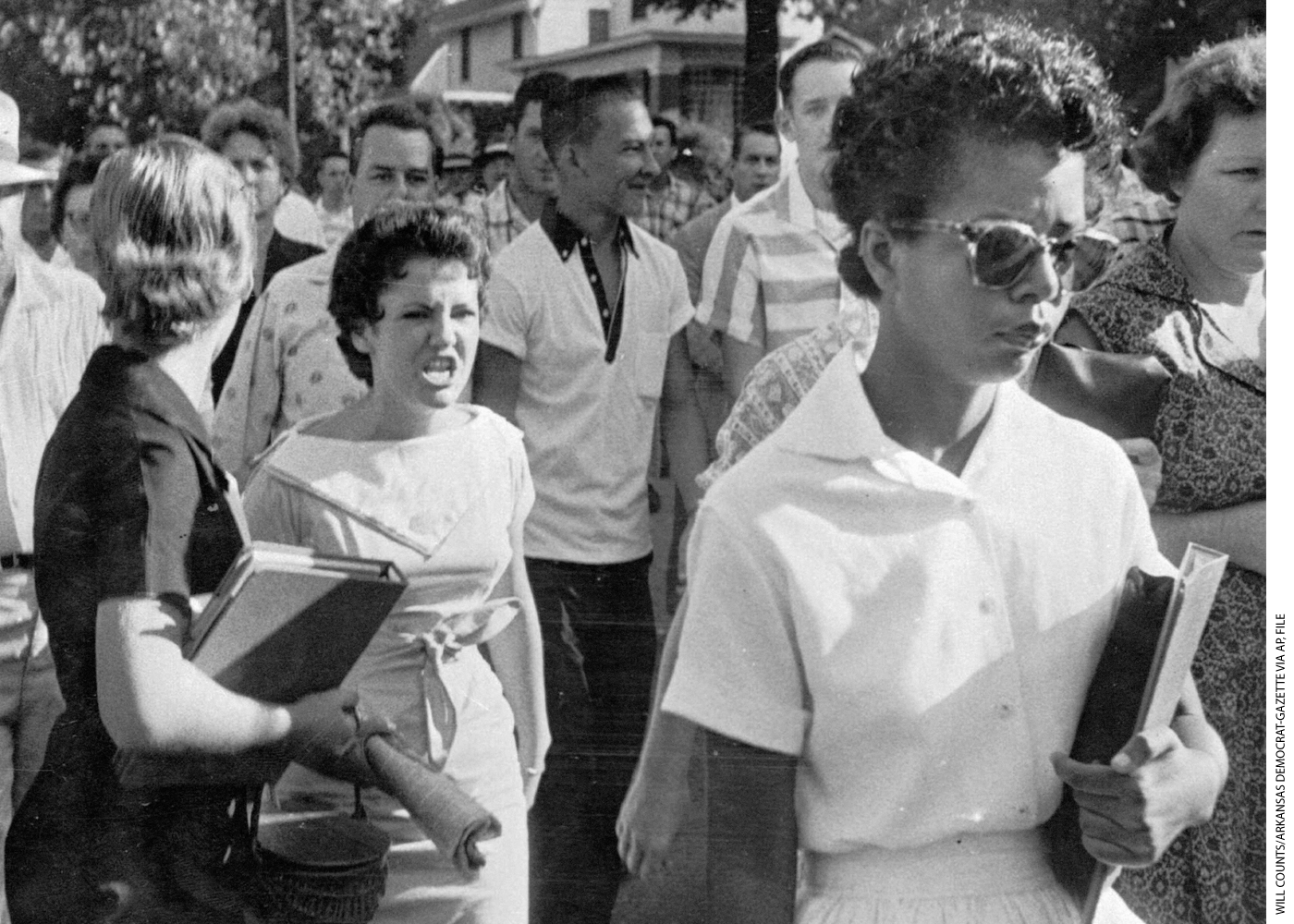
Local activism was bolstered by national support, as often happens in culture wars. Another state-level stakeholder said, “I started receiving numerous emails from individuals outside the state offering financial support to cover the costs. . . . People genuinely wanted to contribute to making this class a reality financially, validate its importance, and show their support.” All informants felt that such pressures led state policymakers to ignore local defiance. One superintendent remarked that, after the Little Rock Nine weighed in on the issue, “I think it was a big political black eye for [the governor]. . . . I feel like [Secretary Oliva] asking for copies of the curriculum was saying, ‘We’re still in control a little bit, even though we lost.’”
Many of the educators involved in the controversy felt the state education department’s failure to support African American Studies as it does other AP courses reflected racism or, at the very least, an inability to come to grips with the nation’s history of racism. A superintendent lamented that “the state’s failure to recognize African American history as a valuable part of our curriculum is disheartening.” Student responses were less restrained. One commented, “I wish more African history were in my classes. A lot of stuff is hidden . . . from not teaching people history.” Another said, “I think why [the governor] called it indoctrination was because a form of white supremacy has to do with feeling uncomfortable.”
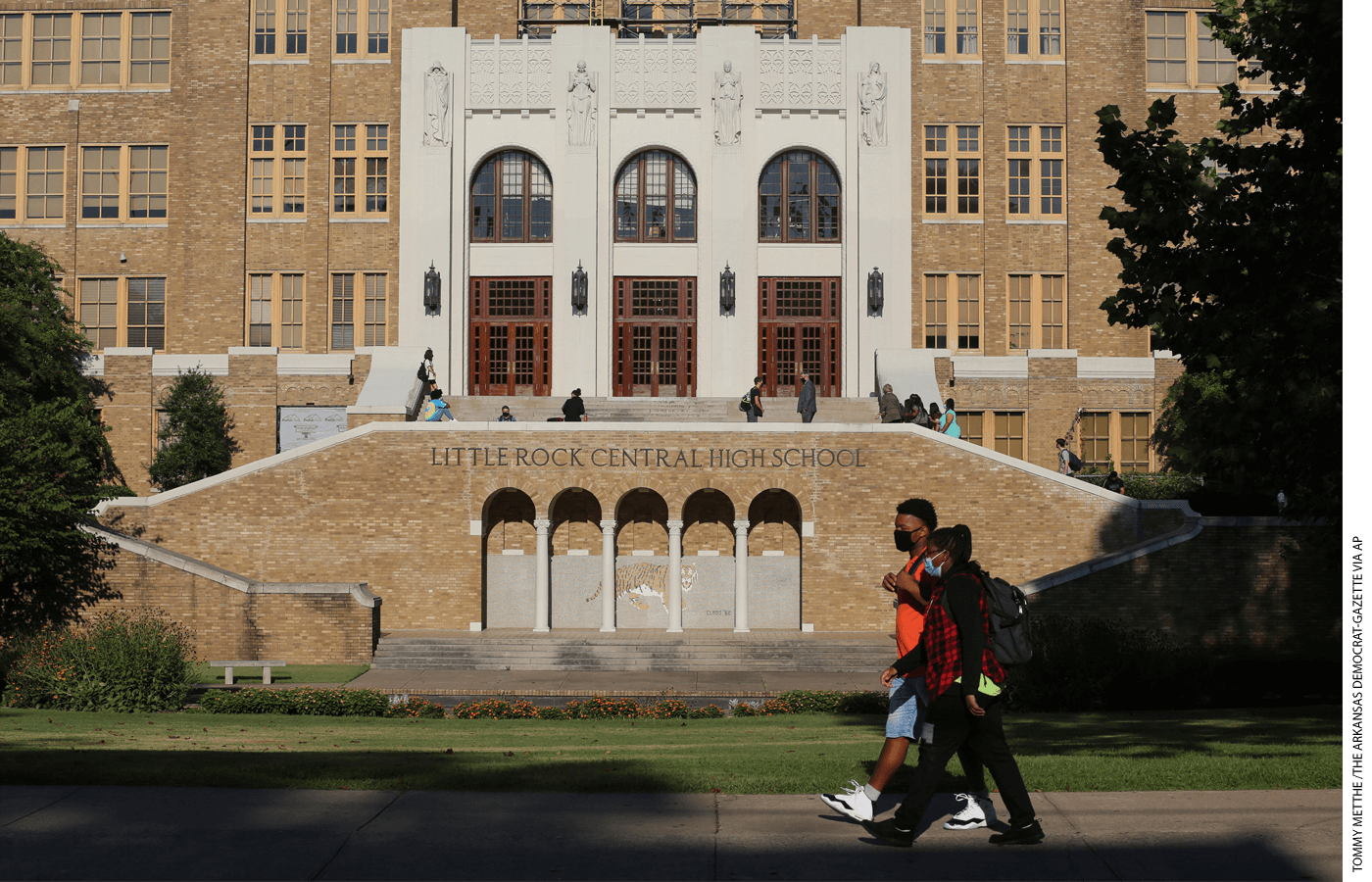
Toward Better Education Culture Wars
Some might lament the recent battle over AP African American Studies in Arkansas and similar conflicts throughout the nation and ask, “How can we stop waging education culture wars?” We believe this misses the mark. We must accept that education culture wars are part and parcel of a democratically controlled education system. As George Clooney recently noted, “Democracy is messy.” It is especially so when it comes to vested interests fighting over what should be taught in public school classrooms. So long as we have a public school system staffed by trained professionals, controlled locally by lay-elected boards, and regulated at the state and national levels by elected and appointed officials, we will have battles over what is taught in public schools. Accepting this reality is the first step toward improving the process.
And improvement is clearly needed. The process of determining what schools teach can be enhanced in (at least) two ways. First, we must do our best to engage with the best arguments of our opponents. We would all do well to take to heart the words of Marcus Foster, the first Black big-city school superintendent who, in Making Schools Work, wrote that “in a conflict situation, all sides usually have legitimate concerns.” You would not know this from most coverage of education culture wars. When conflicts like those over AP African American Studies occur, journalists and scholars should make good-faith efforts to focus more on verifiable facts and less on who takes what side.
In the case of AP African American Studies, few outlets sought to understand or explain the nuanced arguments for and against the course. Indeed, some thoughtful critiques of the curriculum did exist at the time, but they were often overshadowed by the loudest voices, who may have been seizing on a culture war issue for political gain. Few, if any, of the combatants or their supporters in the press understand the differences between the scholarly (and often more centrist) African American history developed by Carter G. Woodson and other professional historians and the more activist (and critical theory–dominated) African American studies approaches seen in the AP course, which reflect developments in the academy since the 1960s.
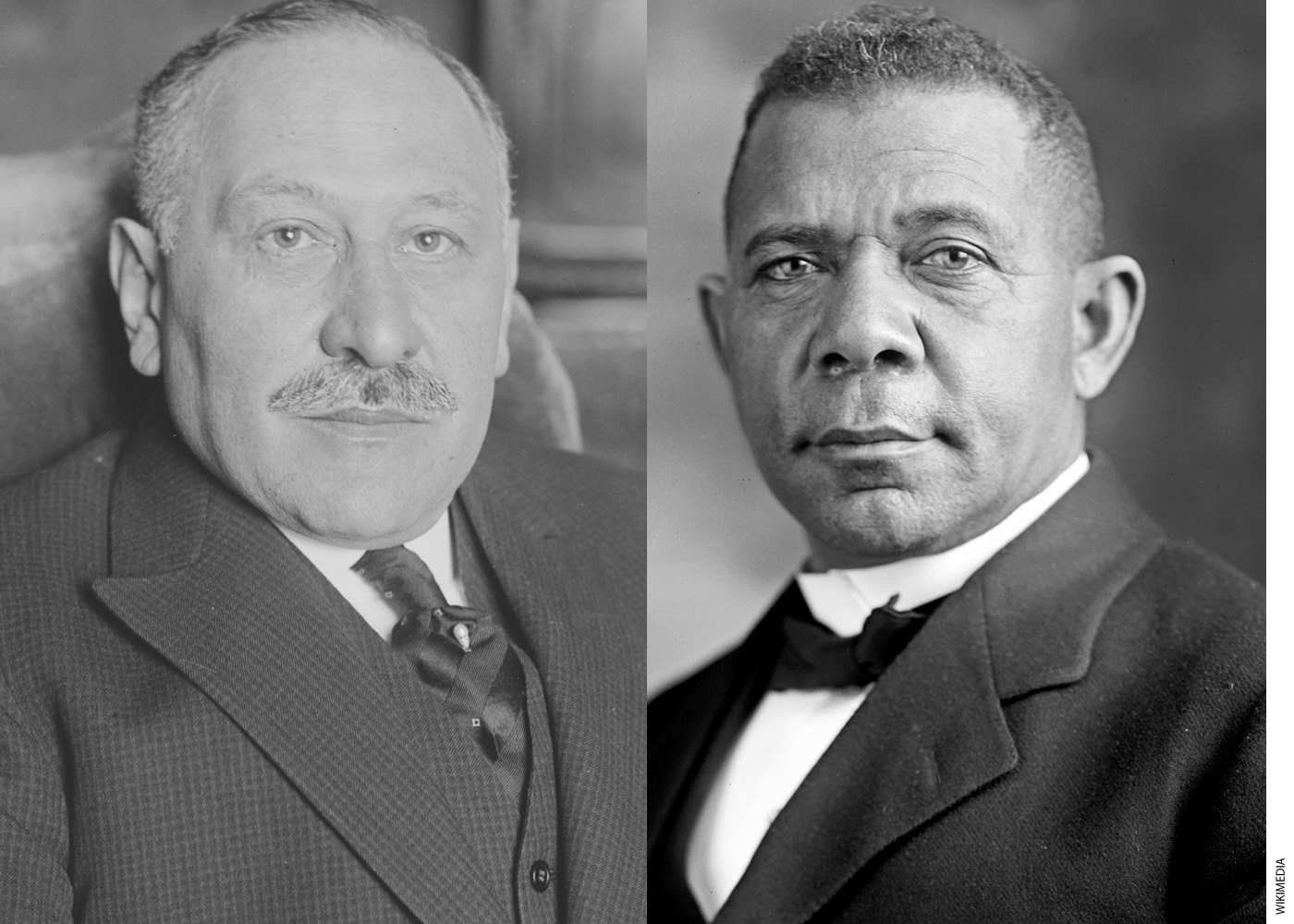
To be clear, this is not to argue against teaching AP African American Studies. From Phillis Wheatley to the Great Migration, the new course features vital topics which, as those we interviewed pointed out, receive insufficient (or no) coverage in other courses. That said, even after recent revisions, the College Board framework reveals questionable decisions about what content to include and what to leave out. The 250-page document suffers glaring omissions that seem to be politically motivated. For example, as Stephen L. Carter pointed out in The Culture of Disbelief, African Americans are likely the most church-going demographic group in the West—yet this goes unmentioned. The framework paints churches as political safe spaces, not spiritual havens. It highlights recent trends toward secularization (“Young Black Adults Less Protestant than Their Elders”) while ignoring the significant role of the Black church in the Black American identity.
Additionally, the framework portrays the controversial Black Panthers in a favorable light while failing to mention Marcus Foster, the pathbreaking Oakland educator we quoted previously. Perhaps this is because Foster was often at odds with the Black Panthers and was assassinated by Maoists. With the exceptions of Colin Powell and Booker T. Washington, we find no centrist or conservative Black leaders in AP African American Studies, while marginal leftist actors like the Combahee River Collective get positive portrayals. These decisions contributed to a perception of slanting history as much as telling it.
The AP African American Studies course also seems bent on highlighting interracial conflict rather than cooperation. For instance, the framework leaves out partnerships between Black and white people on such matters as creating the first integrated interest group in the hemisphere, 1780s Philadelphia abolitionists. It fails to mention that Tuskegee Institute President Booker T. Washington and Sears Roebuck President Julius Rosenwald, a white man, worked together to build over 5,000 “Rosenwald Schools” to educate Black students where white-run governments refused to do so and hugely improved African American literacy rates. The partnership between Jackie Robinson and Dodgers General Manager Branch Rickey in integrating Major League Baseball likewise goes missing. Such omissions contributed to a critique that the course emphasized division over cooperation.
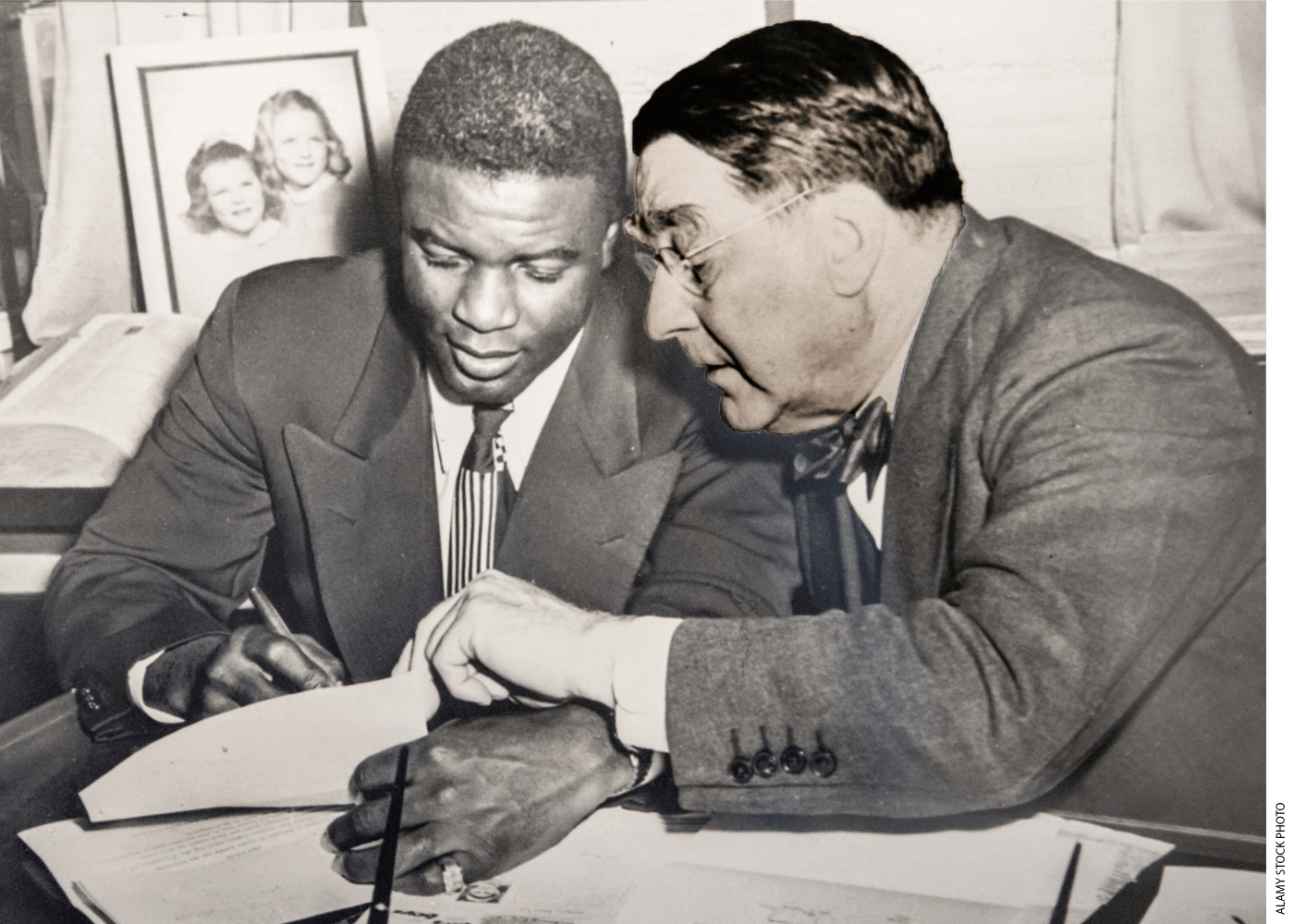
While we might forgive the absence of a baseball GM, there are in our view too many other omissions to believe the exclusions were unintentional. After all, the framework fails even to mention “the Great Emancipator,” Abraham Lincoln. In short, the College Board’s course too often portrays history as a zero-sum racial conflict, erasing intergroup cooperation and, with it, an inclusive American identity.
Pointing out the flaws and omissions in AP African American Studies is not to take sides regarding whether the course should be offered—we think it should, so long as supplemental materials are added. It instead sets up our second observation. Education culture wars are inevitable in a democratically controlled education system. AP African American Studies in Arkansas is just one example; it will not be the last.
Yet these conflicts can be managed. Through greater emphasis on local control and decision-making, which includes expanding educational options for parents and students, we can reduce tensions. State policymakers can support these aims by reducing exclusive reliance on specific curriculum providers like the College Board. Just as Florida has recognized the Classic Learning Test as an alternative to the ACT and SAT, states can open pathways for other programs that compete with the College Board’s Advanced Placement coursework.
The battle over the AP African American Studies curriculum in Arkansas is a prime example of what democracy looks like in public education. It looks like individuals with competing interests, values, and visions of America striving to influence what is taught to schoolchildren. So long as we have public education, such conflicts will persist. Our goal should not be to prevent culture wars by removing public schools from democratic control by elected officials. Instead, our goal should be to provide mechanisms that allow pluralism to prevail over winner-take-all approaches.
Robert Maranto is the 21st Century Chair in Leadership at the Department of Education Reform at the University of Arkansas. Sarah Ruth Morris is a research liaison for Rice University’s Houston Education Research Consortium and Pasadena Independent School District. James V. Shuls is an associate professor and the graduate program director of educational leadership and policy studies at the University of Missouri–St. Louis.
This article appeared in the Winter 2025 issue of Education Next. Suggested citation format:
Maranto, R., Morris, S.R., and Shuls, J.V. (2025). Education Culture Wars: Is This What Democracy Looks Like? Recent battles over AP African American Studies courses in Florida and Arkansas have discouraged many, but they’re a sign of a healthy republic. Education Next, 25(1), 46-53.


